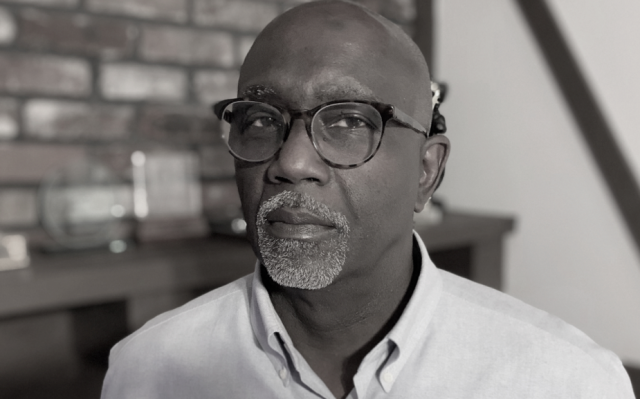By Keisa Sharpe-Jefferson
The Birmingham Times
While searching his dilapidated barn in 1993, Allen Durough, a Bessemer, Alabama, minister, made an uncanny discovery. Durough, who’s now deceased, uncovered 411 printing plates that belonged to Wallace Augustus Rayfield, the Black architect who designed the Sixteenth Street Baptist Church in downtown Birmingham. That historic discovery caught the attention of documentary filmmaker Dwight Cammeron.
“Initially, [I’d planned] to do a short segment about those printing plates and about Durough,” Cammeron said.
But Rayfield’s legacy would take center stage.
Rayfield, who died in 1941, is believed to be the second formally educated and practicing Black architect in the United States, behind Robert Robinson Taylor, the Massachusetts Institute of Technology’s (MIT’s) first Black graduate and the nation’s first accredited Black architect.

Durough eventually authored a book about Rayfield, “The Architectural Legacy of Wallace A. Rayfield: Pioneer Black Architect of Birmingham, Alabama,” which was published by The University of Alabama Press in 2010.
Discussing Durough’s find, Cammeron said, “These are wooden plates that Rayfield carved to make his advertisements and pictures of designs and things of that nature. But once I started researching Wallace Rayfield, I determined that there had never been a featured documentary about his work and his impact on architecture in the South and in the nation.”
Cammeron used a large amount of Durough’s research to produce the documentary, “Finding the Cornerstone: The Wallace A. Rayfield Story,” which premiered at Birmingham’s 2020 Sidewalk Film Festival and will be televised on Alabama Public Television on Martin Luther King Jr. Day, Monday, January 15, at 9 p.m.
Rayfield designed not only the Sixteenth Street Church but other historic sanctuaries in the Magic City, including the original Sixth Avenue Baptist Church (the structure Rayfield built has been torn down), the old location of Sardis Baptist Church (1240 Fourth Street North), 23rd Street Baptist Church (331 23rd Street South), 32nd Street Baptist Church (518 32nd Street South; the building was demolished in 2021), and Harmony Street Baptist Church (553 42nd Place North). He also designed the current location of the Jimmie Hale Mission (3420 2nd Avenue North) and the Pythian Temple Building (310 18th Street North).
In Pursuit of Truth
One early question for Cammeron: How did those plates get to Bessemer? His research showed that “Rayfield lost his business during the Depression, … and [I] have found some records to show that his possessions were auctioned off,” said the filmmaker.
“An antique dealer by the name of Eston Hallmark, … we believe he purchased Rayfield’s belongings and transported them to that barn in Bessemer.”
Durough was asked to donate the wooden plates.
“The Durough family still owns the plates,” Cammeron said. “So, it’s more or less a question about who owns history. Just because you find something, does it really belong to you?”
Cammeron estimates Rayfield has around 10 remaining structures still standing in Birmingham, including the Sixteenth Street Baptist Church. Throughout his life, the renowned architect designed more than 400 structures across 20 states.
A Southeast Native
Rayfield was born in Bibb County in Macon, Georgia, in 1874. He was the son of a railroad porter. Rayfield attended Howard University for his undergraduate studies, earning a Bachelor of Science degree in classics in 1896. He then earned a graduate certificate from Pratt Institute in New York City in 1898, followed by a Bachelor of Architecture degree from Columbia University, also in New York City, in 1899.
When Rayfield graduated, renowned educator, author, and orator Booker T. Washington recruited him to lead the Directorship of the Architectural and Mechanical Drawing Department at the Tuskegee Institute (now Tuskegee University) in Tuskegee, Alabama. According to the Cammeron, it was history in the making, with both Rayfield and Taylor leaving their imprint for generations to come.
“Robert Taylor and Wallace Rayfield both worked at Tuskegee, …. and they helped build Tuskegee, too, with their designs,” he said.
Rayfield met his first wife, Jennie Hutchins, while teaching at the Tuskegee Institute. She later died in 1929. After working in education at Tuskegee for nearly a decade, Rayfield left academia, moved to Birmingham, and formed his architectural company, W. A. Rayfield & Co., Architects.
His union with wife Jennie produced one daughter, Edith, who, according to research by Durough, taught school at Council Elementary in the Ensley neighborhood. Rayfield eventually remarried and lived in the Titusville neighborhood with his second wife, Bessie Fulwood Rogers, whom he married in 1932.
In more recent years, a modular home construction community in Titusville with three homes, called Live on First, was named after Rayfield.
A Labor of Love
As he worked on the documentary, Cammeron said he was most surprised that many of Rayfield’s structures were important meeting places during the Civil Rights Movement.
“[Rayfield] moved to Birmingham in the 1920s because there was a substantial working class of African Americans who needed homes and churches designed. Several of his church buildings were meeting places during the Civil Rights Movement,” said Cammeron, who lives in Northport, Alabama, with his wife of 30 years, Joyce, and worked at the University of Alabama as an educator in the Department of Journalism and Creative Media before focusing on independent filmmaking.
Cammeron and his wife have a son, Malcolm, who’s completing his doctoral studies in history at the University of Virginia, and a daughter, Jamia, who is an executive for International Hotel Group in Atlanta, Georgia.
Cammeron is a Gadsden, Alabama, native who graduated from Gadsden High School. He did his undergraduate studies at the University of Alabama at Birmingham (UAB), where he earned a degree in Film Communication, and he earned a master’s degree in Telecommunication and Film from the University of Alabama.
The goal of the Rayfield documentary is simple, the filmmaker said: “I just want to share his legacy with people.”
“Finding the Cornerstone: The Wallace A. Rayfield Story” will air on Alabama Public Television on Martin Luther King Jr. Day, Monday, January 15, at 9 p.m. The Wallace A. Rayfield Museum, which opened in 2022, is located at the former parsonage of the Sixteenth Street Baptist Church, which Rayfield designed. To learn more about Wallace A. Rayfield’s legacy, visit https://wallacerayfieldfilm.com.




![32nd-street-baptist-church_Bham-HABS-800×570[1]](https://www.birminghamtimes.com/wp-content/uploads/2024/01/32nd-street-baptist-church_Bham-HABS-800x5701-1.jpg)
![16th-Street-Feature[1]](https://www.birminghamtimes.com/wp-content/uploads/2024/01/16th-Street-Feature1.jpg)
![23rd-Street-Baptist-Church-Birmingham-Alabama[1]](https://www.birminghamtimes.com/wp-content/uploads/2024/01/23rd-Street-Baptist-Church-Birmingham-Alabama1.jpg)
![Bessemer_New-Zion-Baptist-Church-Bessemer-Alabama[1]](https://www.birminghamtimes.com/wp-content/uploads/2024/01/Bessemer_New-Zion-Baptist-Church-Bessemer-Alabama1.jpg)
![Old_Sardis_Bham[1]](https://www.birminghamtimes.com/wp-content/uploads/2024/01/Old_Sardis_Bham1.jpg)


